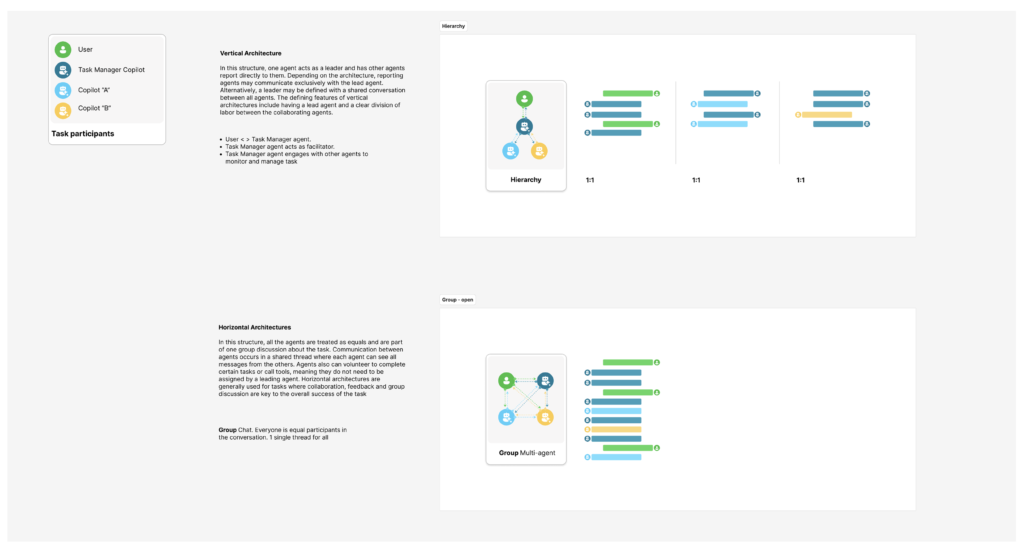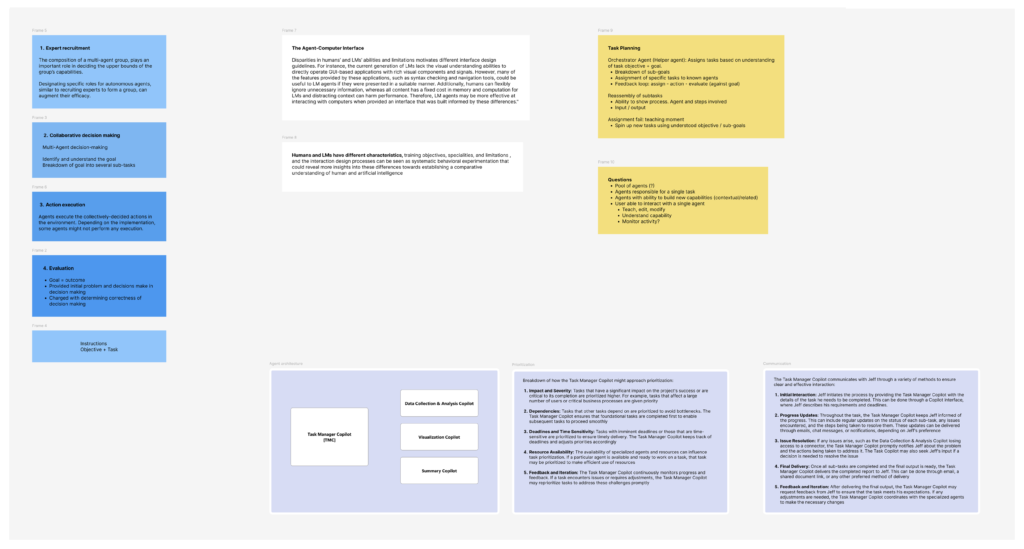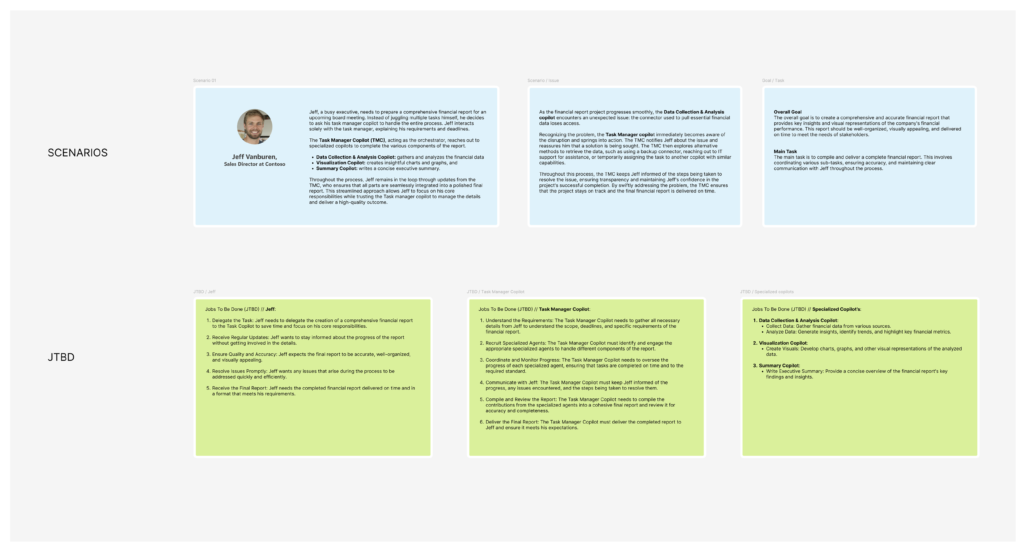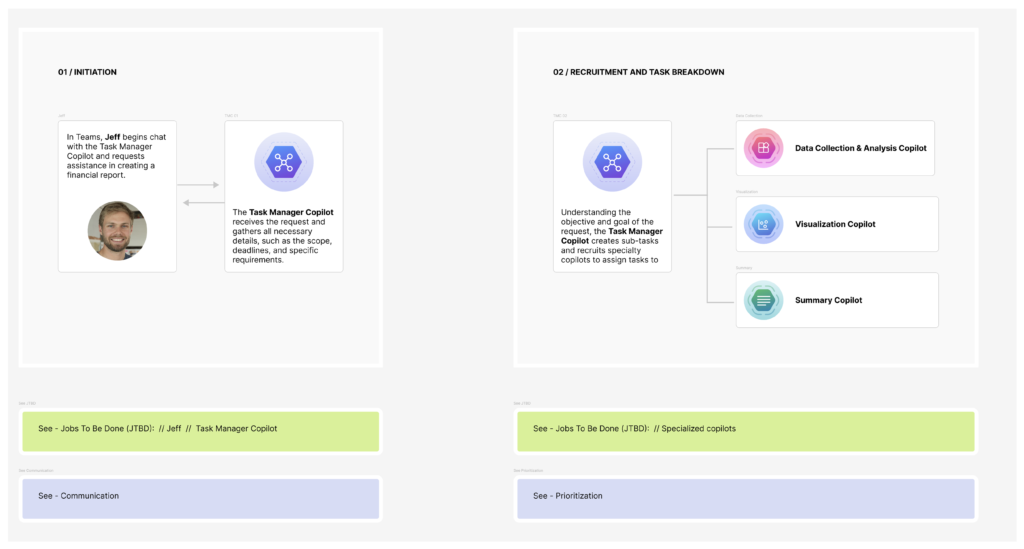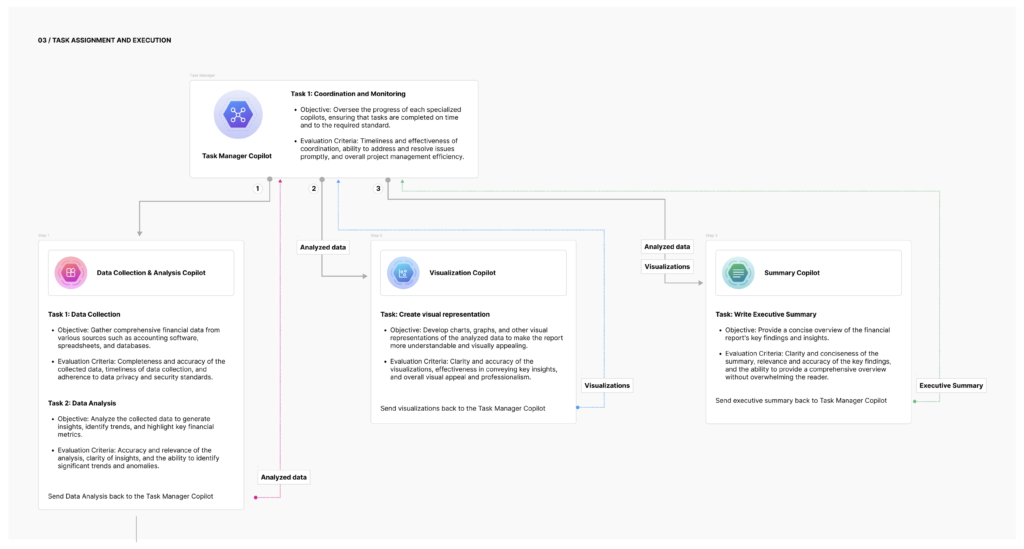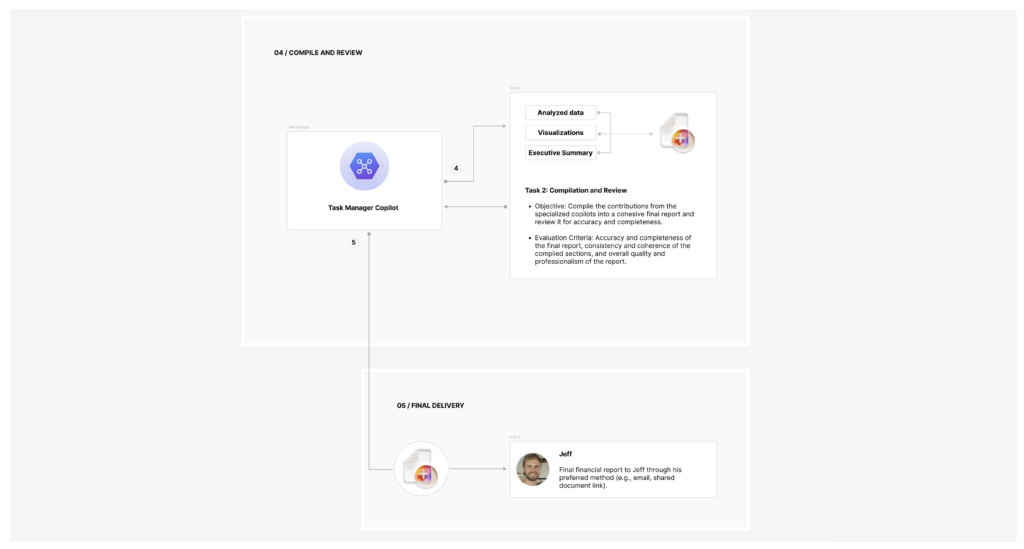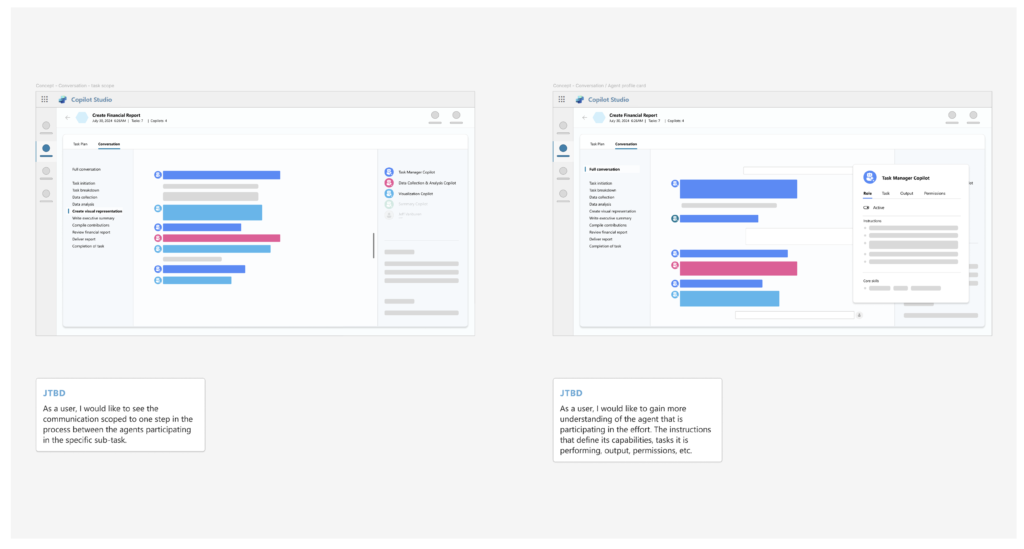Multi-Agent Financial Report
This project explores the development of a multi-agent solution designed to create a comprehensive and accurate financial report that provides key insights and visual representation of the company’s financial performance with minimal human intervention.
- Introduce a Task Manager Copilot (TMC), we aim to streamline Jeff’s workflow, allowing him to delegate repetitive tasks and focus on strategic decision-making.
- Maintain Human involvement to ensure accuracy and relevance.
- Build trust in the Task Manager Copilot by prioritizing clear communication, ensuring the accuracy of information, and maintaining transparency throughout the process.
ROLE & RESPONSIBILITY
I developed a comprehensive end-to-end scenario, defined the responsibilities of each copilot, created detailed user flow diagrams, drafted copilot instructions, and designed high-level wireframes to ensure a seamless and efficient financial reporting process.
- Research and persona development: Jeff, a busy executive
- Agentic architecture research: outline roles of Task Manager Copilot and specialized copilots assigned to specific tasks
- Crafting of scenario(s): Key tasks related to financial research, data gathering and report creation.
- User flow diagrams to illustrate assignment, hand-offs, asset compilation and execution of tasks.
- Drafting of guidelines for creating multi-agent experience.
- Wireframe drawings to demonstrate high-level interactions
- Stakeholder engagement: Review with Engineering leadership to confirm architecture and UX Research to align on JTBD.
ARTICULATION OF DESIGN CHALLENGE
The primary objective is to develop an autonomous system capable of compiling and delivering a comprehensive financial report. This requires the coordination of various sub-tasks, ensuring data accuracy, and maintaining clear communication with the human user throughout the process. By doing so, we ensure that the system operates reliably and meets the user’s expectations.
RESEARCH INSIGHTS
Through extensive research, I explored various multi-agent architectures, understood agent recruitment and task assignment mechanisms, and identified the Jobs-To-Be-Done for Jeff and each agent, ensuring a well-structured and efficient approach to the project.
- Exploring multi-agent architecture: In-depth analysis to identify the most suitable option for executing the project concept.
- Agent recruitment: Comprehensive research to understand the mechanisms which agents recruit and assign tasks.
- Development of strategies to ensure efficient task distribution and agent collaboration.
- Jobs-To-Be-Done (JTBD): Identifying key tasks and responsibilities for each agent to ensure a clear and organized workflow.
- Wireframe drawings to demonstrate high-level interactions
- Stakeholder engagement: Review with Engineering leadership to confirm architecture and UX Research to align on JTBD.
RESULTS & IMPACT
The exploration raised awareness of multi-agent systems, received positive user feedback, and inspired a larger effort to develop “Workspaces,” showcasing the high-impact and potential of the work completed.
- Significantly increased the team’s understanding of multi-agent systems
- Positive user feedback: sharing with internal stakeholders revealed promising potential of agents executing specific actions withing a larger system.
- Highlighted the practicality and efficiency of the approach
- Inspiration for larger efforts: a catalyst for broader initiatives to explore the concept of “Workspaces”
DESIGN PRINCIPLES
User-Centric Design
The solution must be intuitive and impactful by deeply understanding the user’s needs, context and preferences. Design decisions are rooted in empathy and real-world insights.
Build Trust
Transparency is key to earning user trust. The user must be able to understand, audit and control system decisions.
Embrace Emerging Technology
Ensure that solutions remain cutting-edge and continuously evolve to mee the ever-changing needs of users.
Automate Processes
Prioritize research and experimentation to automate business processes and enhance user experience. Streamlining operations and reducing manual effort empowers users to focus on what truly matters.
